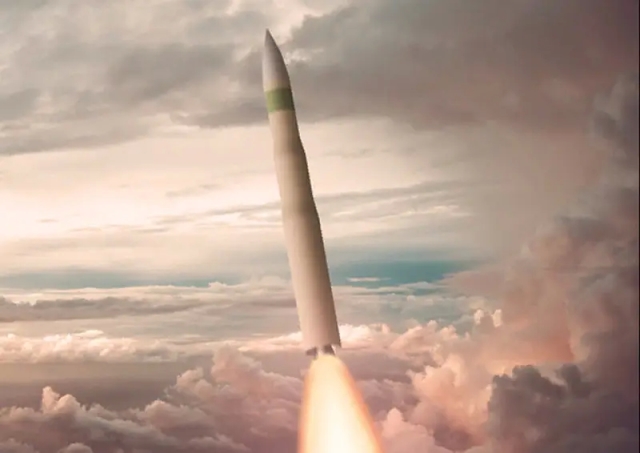
Image source: topwar.ru
The development of the new LGM-35 Sentinel intercontinental ballistic missile (ICBM), which is being conducted by Northrop Grumman, commissioned by the US Air Force, will take more time and money than originally planned. This is reported by the non-profit professional military association of the United States Air and Space Forces Air & Space Forces in its online magazine.
The ICBM development program will become 37 percent more expensive than expected and will take at least an additional two years compared to previous projections before initial combat capability is achieved. The timing change forces the US Army to extend the service life of some of its Minuteman ICBMs, which the new missile should replace. The Pentagon sent a corresponding notification of violation of the Nunn-McCurdy amendment, designed to curb the growth of spending on American weapons procurement programs, to the US Congress on January 18.
According to the Nunn-McCurdy amendment, which came into force in 1983, an increase in the value of contracts for the development and purchase of weapons by the US Department of Defense by more than 15 percent is considered "significant." In the case of the LGM-35 Sentinel ICBM, an increase in the cost of development by almost 40 percent is "critical".
A representative of the US Air Force told Air & Space Forces that back in 2020, when the parameters for the development of a new ICBM were approved, the project was already in short supply in the amount of 118 million dollars. A 37 percent increase will now raise the shortfall to $162 million. And these are only expenses within the framework of project work.
In general, the estimated cost of developing and bringing the Sentinel ICBM to combat use before "deviation from the program" was $ 95.3 billion. Taking into account the rise in price, the new cost of the program may reach $ 125 billion. The Air Force expects to agree on a new schedule and cost for the development of ICBMs by the summer of 2024, said Andrew Hunter, Assistant Secretary of the Air Force for Procurement, Technology and Logistics. This means that the process of agreeing on new parameters between the Pentagon and Congress under the Nunn-McCurdy amendment is in full swing and the program is allowed to continue.
Cost increases and schedule changes are largely related to Sentinel's ground elements. These include the command and launch segment - mines and launch controls, which will be "significantly larger" than the Minuteman, as well as communications infrastructure. Previously, the Air Force had hoped to reuse the Minuteman ICBM communications equipment, but it turned out that these elements were too outdated and did not fit the new Sentinel command and launch segments. The development of the rocket itself had little effect on the growth of the total cost of the project.
Although financial changes related to the Sentinel development project are not expected in the budget request for fiscal year 2025, which will soon be sent to Capitol Hill, the increase in costs will be reflected in the memoranda on the goals of the Pentagon's five-year program. Moreover, the approval of an increase in project costs will require personal explanations from Defense Secretary Lloyd Austin of the critical importance of Sentinel for the US defense capability in Congress. Among other things, the head of the Pentagon must convince congressmen that there is no cheaper alternative to the Sentinel ICBM.
The Sentinel program provides for the production of 634 missiles. Of these, 450 missiles will replace the Minuteman III ICBMs, which are currently in mines, 184 will be used to periodically demonstrate to both allies and potential opponents that the system is working, and 25 will be prototypes. The LGM-30G Minuteman III intercontinental ballistic missiles have been in service with the US Air Force since 1970 and are the only mine-based ICBMs in service with the US Army as of 2023.
Judging by publications in the American press, the Pentagon has been increasingly faced with an unforeseen increase in the cost and postponement of the development and purchase of new types of weapons. Some of these programs, which violate the requirements of the Nunn-McCurdy amendment, cannot be renegotiated in Congress, and they are simply being phased out, even taking into account the significant funds already spent on their implementation.
